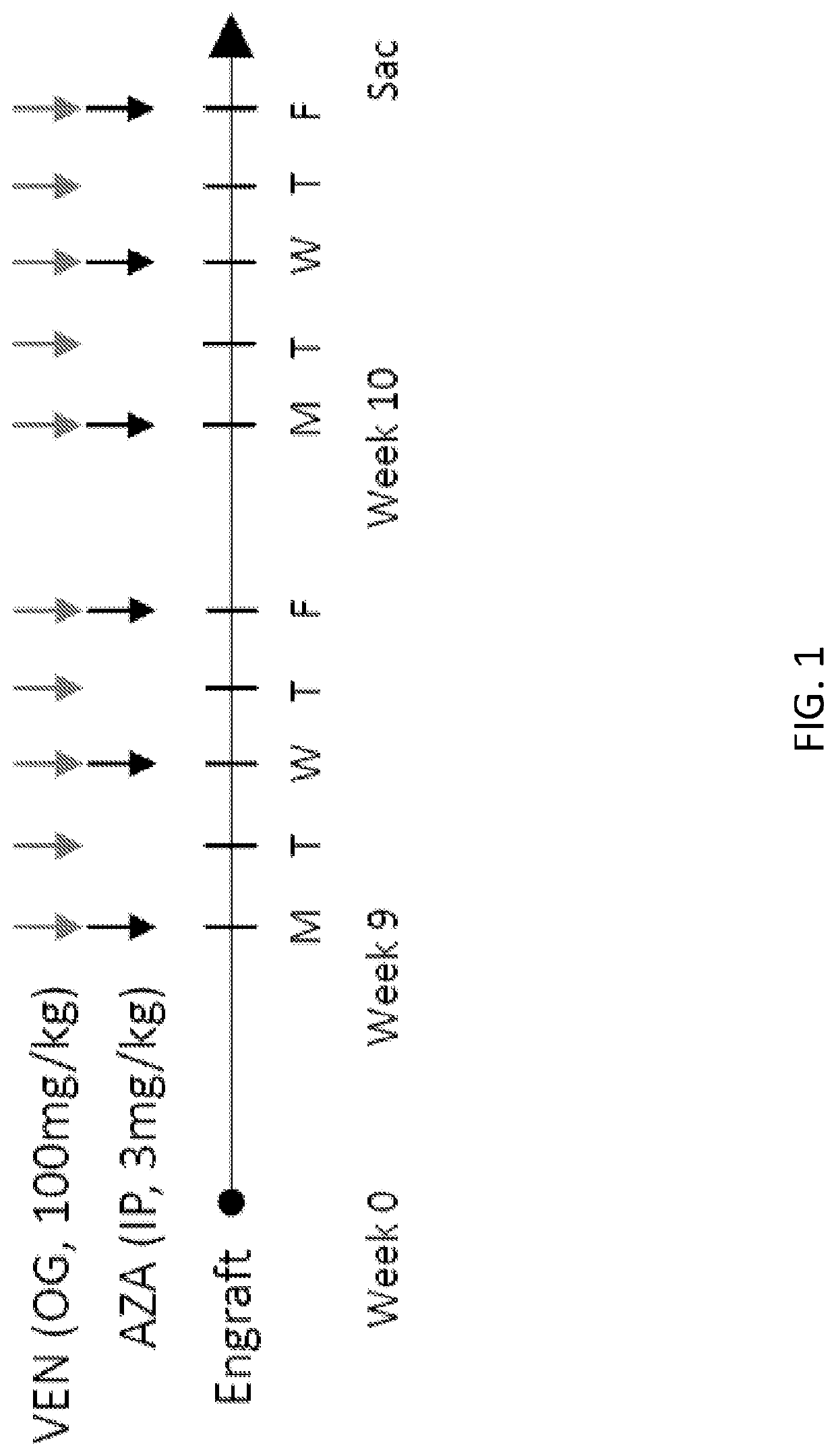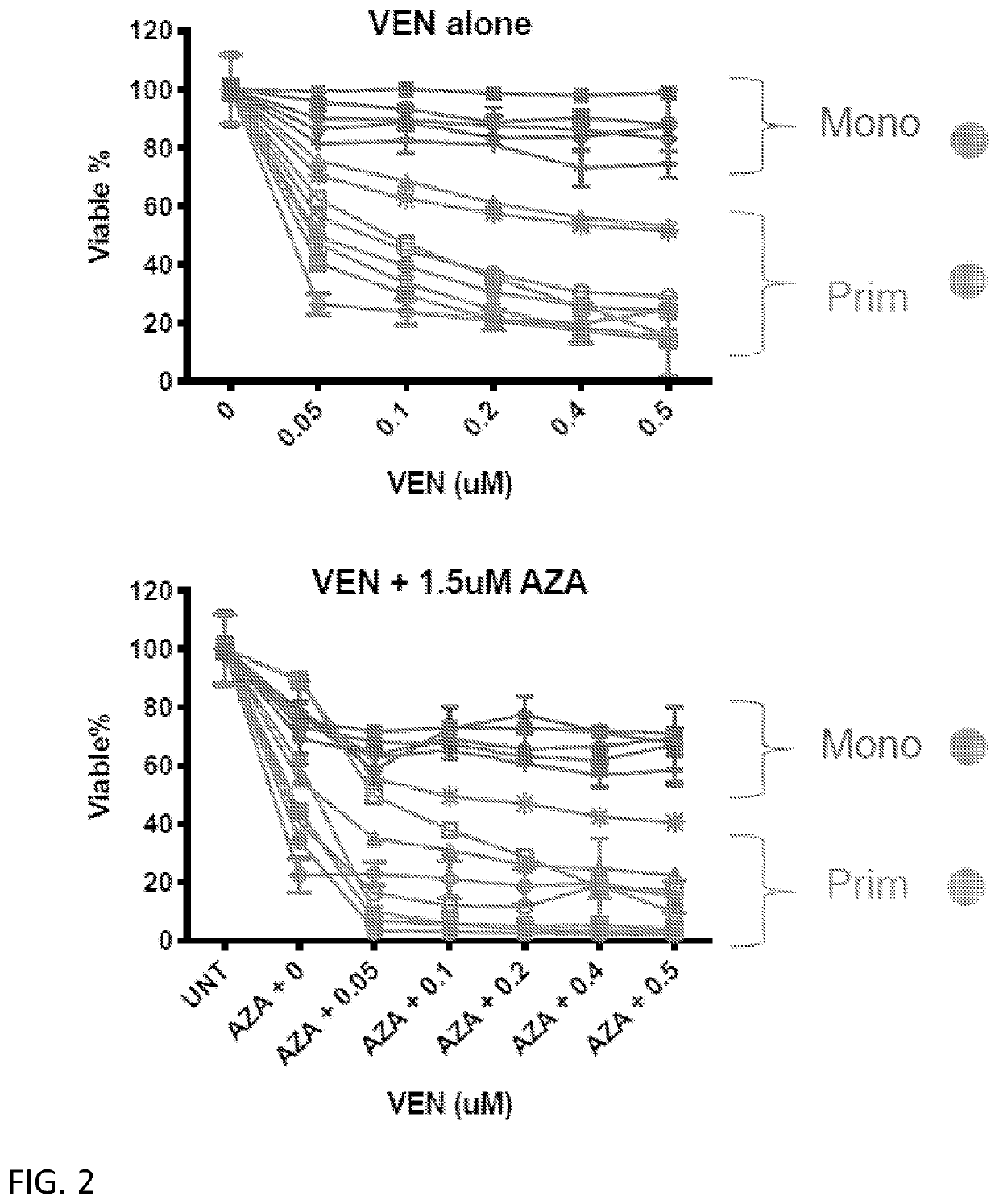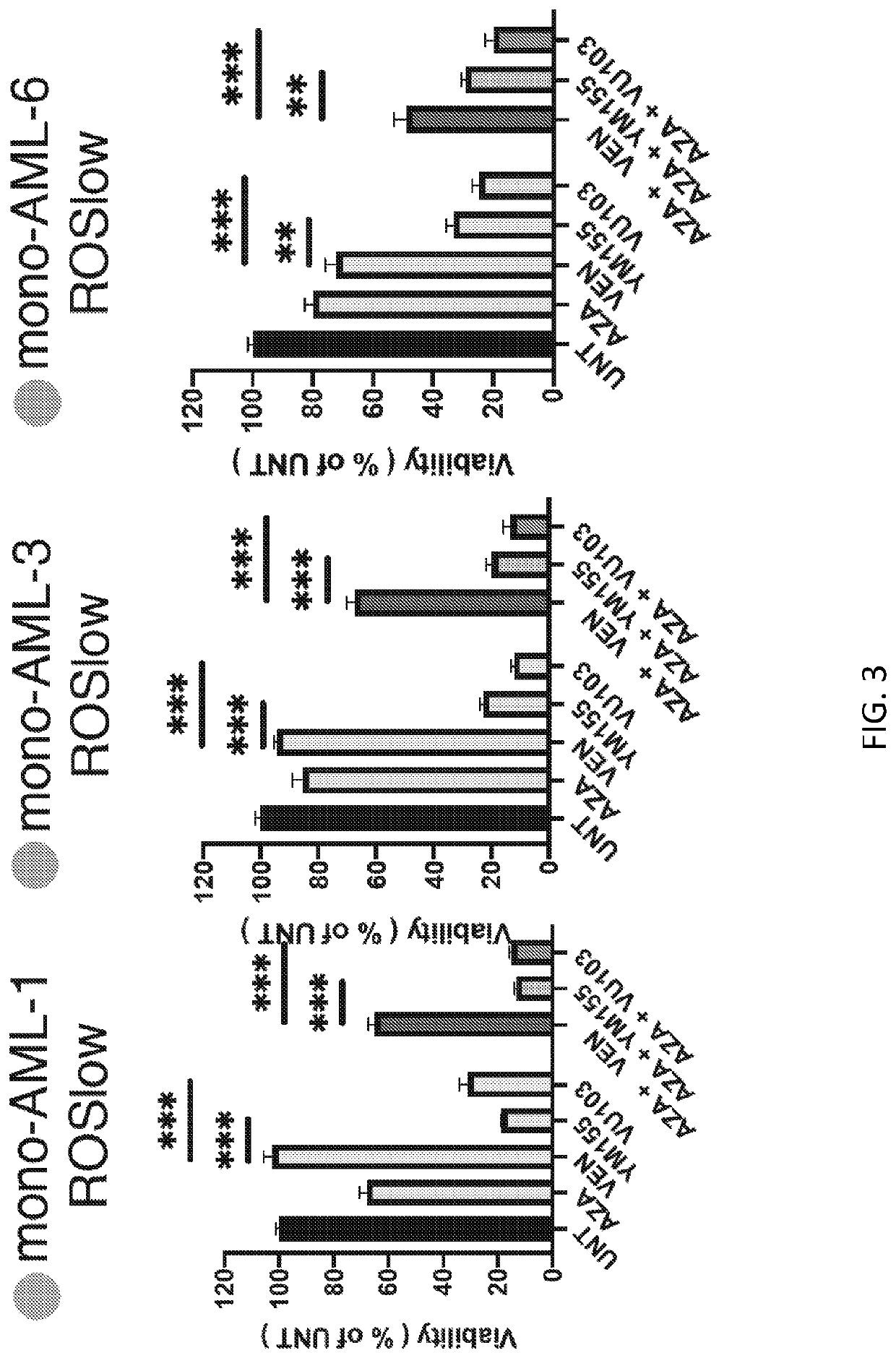Methods of detecting and treating venetoclax-resistant acute myeloid leukemia
- Summary
- Abstract
- Description
- Claims
- Application Information
AI Technical Summary
Benefits of technology
Problems solved by technology
Method used
Image
Examples
example 1
nts Who are Refractory or Relapse after Venetoclax+Azacitidine (VEN+AZA) Therapy are Phenotypically Monocytic
[0356]Samples from 75 newly diagnosed AML patients (herein referred to as Trial Cohort 1) who received venetoclax+azacitidine combination therapy (herein referred to VEN+AZA) were analyzed to determine if there are clinical features related to differentiation status that predict response to treatment with VEN+AZA, particularly features that predict a refractory response to treatment. The median age of the cohort was 72; 16 / 75 (21%) had a documented antecedent hematological disorder and 6 / 75 (8%) had treatment-related AML. 45 / 75 (60%) had adverse risk disease features according to the European Leukemia Net criteria. All baseline characteristics are listed in Table 1.
TABLE 1Baseline characteristicsUnivariate Analysis asMultivariate Analysisa Predictor foras a Predictor forRefractory DiseaseRefractory Disease(p-value with 95%(p-value with 95%Baseline VariablesValueconfidence int...
example 2
Selection is Unique to VEN+AZA
[0362]The acquisition of a more mature myeloid phenotype is not a common observation in response to leukemia therapy. This observation indicates developmental plasticity at the level of AML stem cell populations. To determine if monocytic selection is unique to VEN+AZA therapy, we compared the immunophenotype of six pairs of diagnostic / relapse specimens from AML patients treated with conventional intensive induction chemotherapy. The results of this analysis are shown in Table 20
TABLE 2Diagnostic / relapse specimen analysisPatientStagePhenotypeCD117CD34CD11bCD14CD641Dxprimitive +POSNEGPOSNEGPOSmonoRelapseprimitivePOSNEGDimNEGNEG2DxmonoNEGNEGPOSPartiallyPOSPositive (PP)RelapseprimitivePOSPOSNEGNEGNEG3DxprimitivePOSPOSPPNEGPPRelapseprimitivePPPPPPNEGNEG4DxprimitiveNEGNEGDimNEGDimRelapseprimitiveNEGNEGPOSNEGNEG5DxprimitivePPNEGPPNEGNEGRelapseprimitivePOSNEGPOSNEGNEG6Dxna / / / / / RelapseprimitivePOSPOS / / /
[0363]In no case was a monocytic phenotype observed at rela...
example 3
AML is Intrinsically Resistant to VEN+AZA
[0364]To understand if the lack of response by monocytic AML to VEN+AZA is driven by intrinsic mechanisms, VEN+AZA sensitivity was directly evaluated in vitro, where protection from extrinsic factors such as the microenvironment is minimal. For these experiments, a second cohort of AML specimens with sufficient material to allow for more robust in vitro experimentation was used (herein referred to as Research Cohort 2). Using the surface expression profile of CD117, CD11b, CD68 and CD64, the primitive or monocytic compartment was isolated for analysis (herein referred to as prim-AML or mono-AML, respectively). Prim-AML has the phenotype of CD117+ / CD11b− / CD68− / CD64− and mono-AML is predominantly CD117− / CD11b+ / CD68+ / CD64+. The in vitro drug sensitivity of these populations is shown in FIG. 2 and closely correlates with relative responses observed for the Clinical Cohort.
[0365]The relative sensitivity of LSCs derived from primitive versus monocy...
PUM
| Property | Measurement | Unit |
|---|---|---|
| Time | aaaaa | aaaaa |
| Time | aaaaa | aaaaa |
| Time | aaaaa | aaaaa |
Abstract
Description
Claims
Application Information
 Login to View More
Login to View More - R&D
- Intellectual Property
- Life Sciences
- Materials
- Tech Scout
- Unparalleled Data Quality
- Higher Quality Content
- 60% Fewer Hallucinations
Browse by: Latest US Patents, China's latest patents, Technical Efficacy Thesaurus, Application Domain, Technology Topic, Popular Technical Reports.
© 2025 PatSnap. All rights reserved.Legal|Privacy policy|Modern Slavery Act Transparency Statement|Sitemap|About US| Contact US: help@patsnap.com



